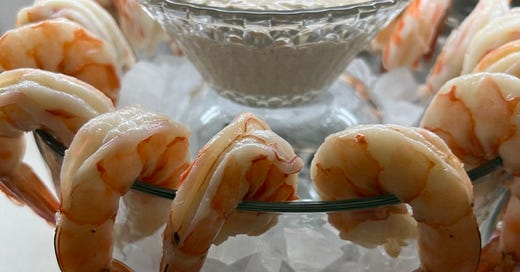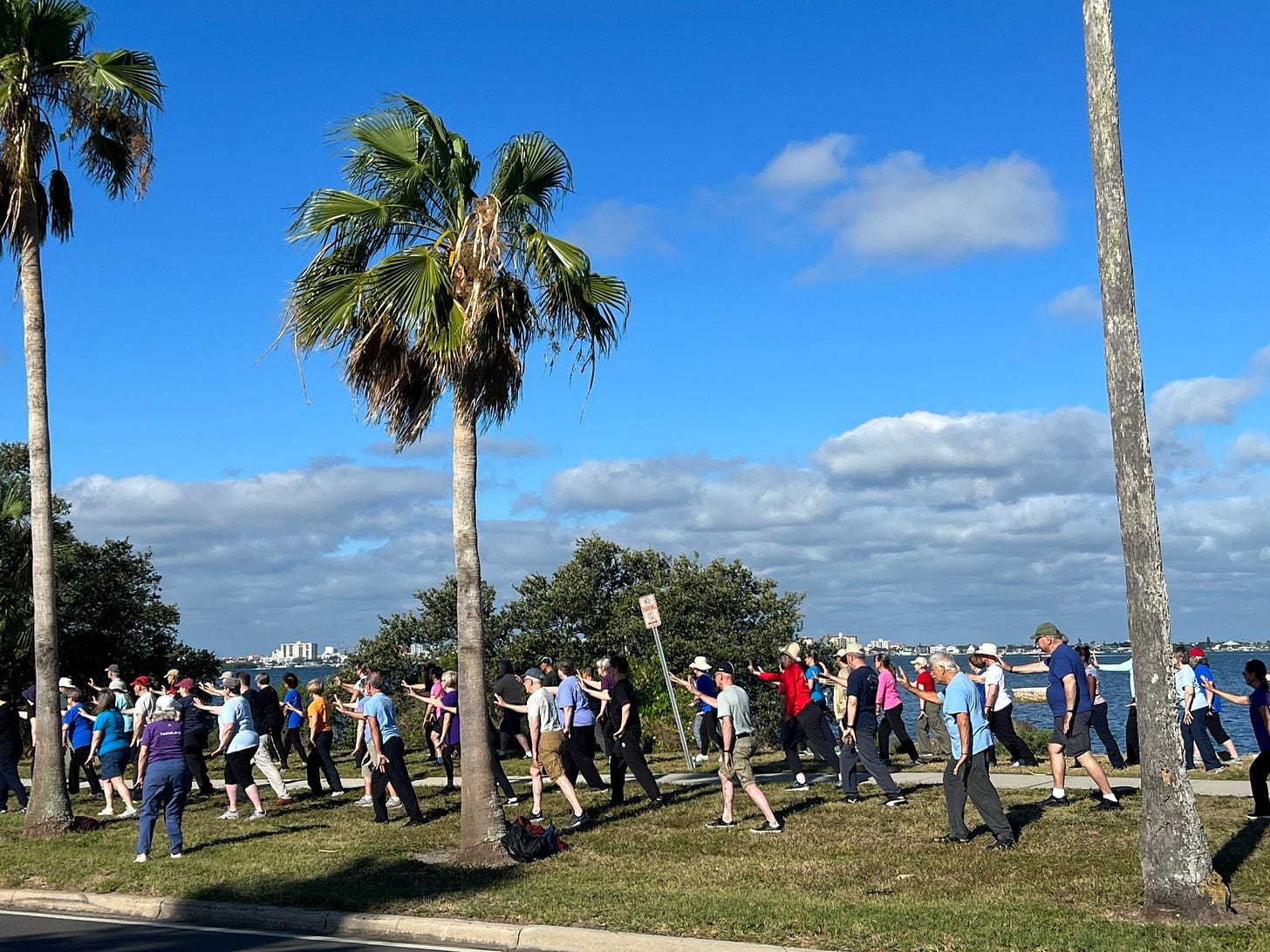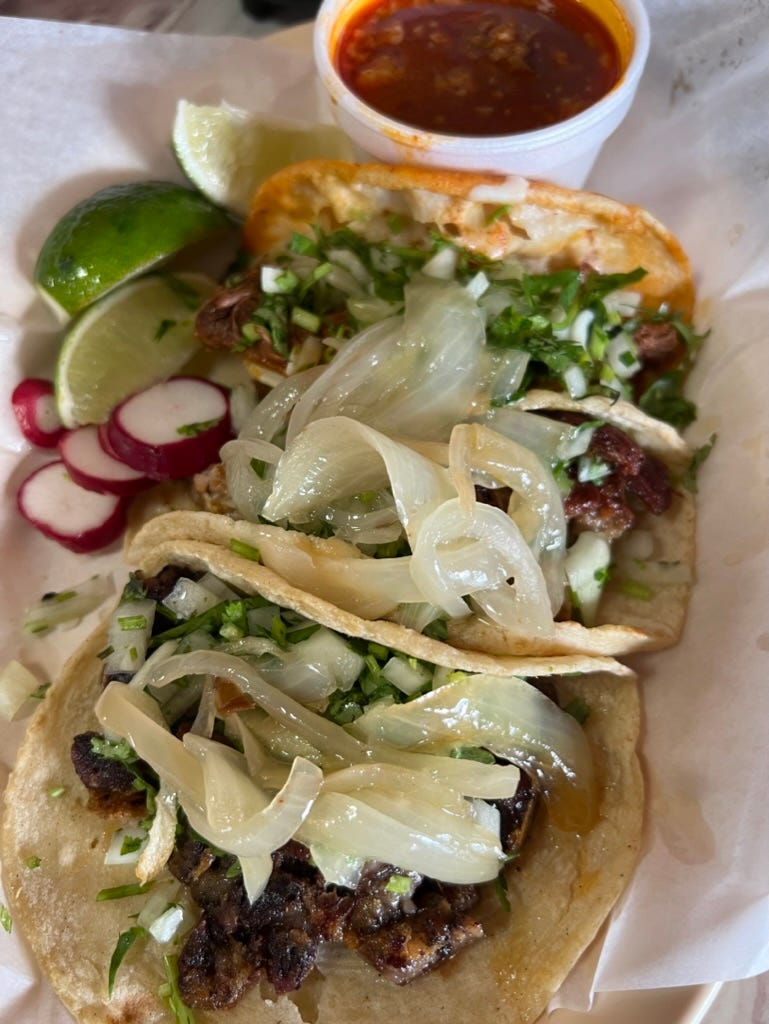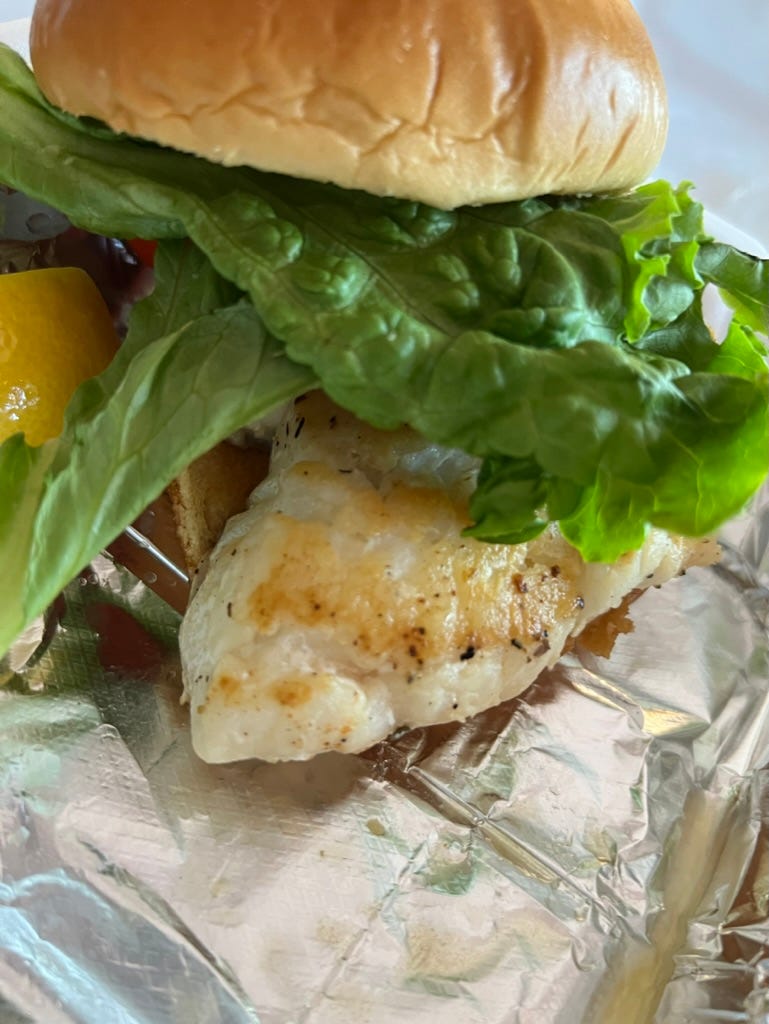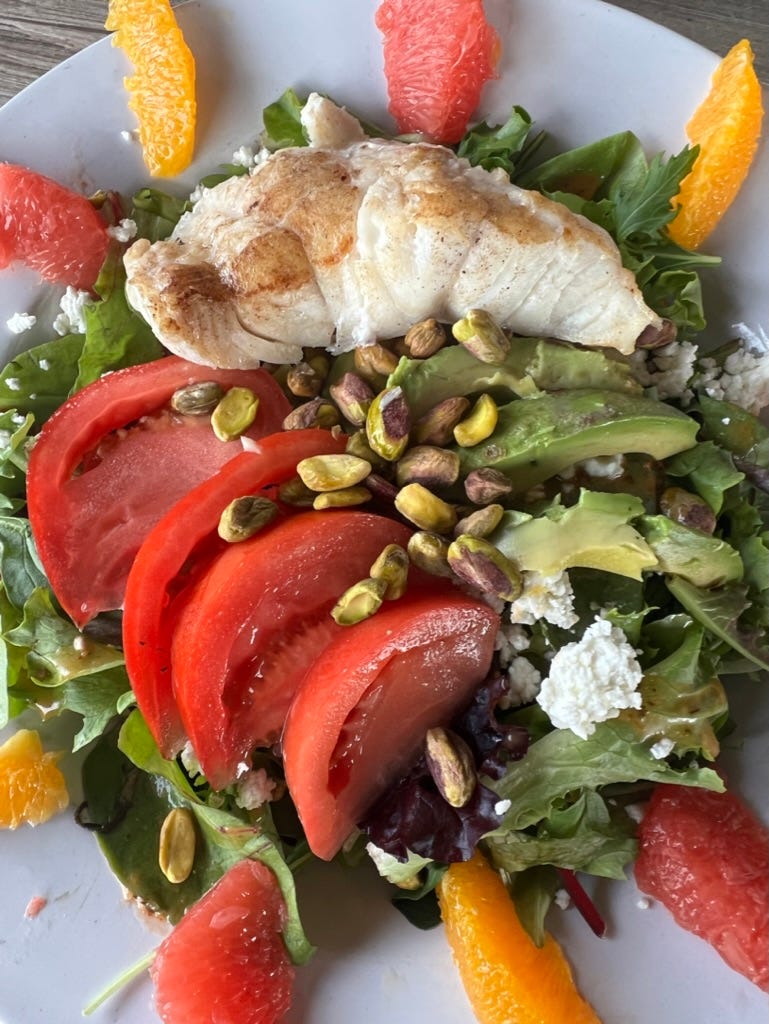Issue #104: West Meet East Meet Louis
Local Politics, Local Seafood, and a Recipe for Louis (aka Louie) Sauce
I’m on still on the road, having landed this morning in Stockholm after my tai chi retreat in Florida. Stay tuned for a Scandinavian dispatch next week. Today we released a new episode of my What’s Burning podcast, for which I interview the inspiring Israeli chef Asaf Doktor of Tel Aviv’s beloved Ha’achim, Abie, and Dok restaurants. At the last, Asaf challenges himself to use only ingredients grown and produced locally in Israel, which makes him one of the most serious proponents of new Israeli cuisine. (For an example of the obstacles such a directive presents, note that because Israel grows so few sesame seeds, there’s almost never tahini on Dok’s menu.) It’s an enlightening conversation about cooking in a small, complicated, and inspiring place.
I was back in Dunedin, Florida, over Memorial Day Weekend for a five-day retreat at the International Center of the Taoist Tai Chi Society of the USA. Putting aside the partisan politics that make any trip to Florida these days ideologically indigestible and the safety warnings of LGBTQ+ organizations to avoid travel to the Sunshine State, the weekend couldn’t have been more restorative. The setting of the society’s center on the water is beautiful. The weather was perfect. The townspeople are super welcoming. And we spotted more than a couple of rainbow flags. Of course, the tai chi was great, too.
Last year in this newsletter I wrote about how the food options in the Dunedin area are slim. Not that there aren’t plenty of restaurants with large cocktails, friendly servers, and lovely outdoor seating areas to take advantage of the temperate evenings. But the food often tries way too hard and much of the “local” seafood (scallops, mussels, and lobster) undoubtedly comes from afar. I got some flak for my criticisms, which I can understand, but behind which I still stand. I don’t blame Florida or its politicians for this culinary overreaching, I blame our collective culture of “more is always better” that we apply to everything from square footage in our homes to ingredients in any one dish.
But this time, I have to admit, whether by finding a few out-of-the-way places or sticking to the simplest things on local menus, I generally ate better than I have in the past. On a long walk from Dunedin to Clearwater I stumbled on what was to be one of the highlights of the weekend, Dona Chirris, a taqueria located behind a gas station (always a good sign). The place caught my eye on Google Maps because the name appeared only in Spanish without the “& Sushi” or “& Bar” that is typical of most places downtown designed to attract any and everyone. The tacos I ordered—lengua, carnitas, and birria—were each fine examples of their genres and the tamarindo aqua fresca was tart and refreshing after my long walk.
Elsewhere I ordered my fill of grouper, a truly local fish that is more likely to come from nearby waters than other common selections. (Sadly, May 1st marks the end of stone crab season, which is #imho the ultimate and most delicious of Florida’s local seafood.)
While enjoying a fillet of grouper grilled and sandwiched between a soft potato roll, I got to thinking for some reason about Louis sauce. Louis sauce is not typical of Florida, originating as it does on the northwest coast of the United States, if you can believe what you read on the internet. But a dollop of that sauce on my sandwich would have been the perfect condiment to complement the tasty fish. Thinking about Louis sauce got me thinking about stone crab claws and that got me wondering why Louis sauce wasn’t common in every community by the sea.
Like many iconic dishes, there are conflicting claims to the origin of Crab Louis, which is generally considered the first and by some the best use of this mayonnaise-based dressing. (Whether it’s spelled Louis or Louie is another debate.) It seems clear that Crab Louis was first served and popularized in the Pacific Northwest in the late 19th and early 20th centuries, where and when the confluence of the completion of the transnational railway, the advent of refrigeration, and an abundance of Dungeness crab would have exposed more people to this favorite salad, already a signature of several hotels and restaurants in Seattle, Portland, and Vancouver.
I associate Louis most closely with the James Beard Award winning Swan Oyster Depot in San Francisco, where they spell it Louie. Upon arrival at SFO after an early-morning flight from JFK, I’ve often headed directly to Polk Street to get a seat at the counter before the noon rush (they open at 8 am and close at 2:30 pm). I’ll usually order a half dozen oysters, and then a pile of shrimp or a split Dungeness crab, both served traditionally on a bed of shredded iceberg lettuce with a generous puddle of Louie sauce on the side (note their spelling).
The way children (used to?) aspire to advance socially and economically beyond their parents, Louis sauce could be the offspring of Russian Dressing and Thousand Island. The variations are many, but most have in common mayonnaise, ketchup or its curious cousin “chili sauce,” Worcestershire, horseradish, and shallots. To my taste, some chopped pickle, capers, and fresh herbs, such as chervil and chive, are also welcome additions.
For New Year’s Eve 2022, on the request of one of our guests who had recently enjoyed Andrew Carmellini’s Crab Louie at The Dutch, I made a vat of Louis sauce to accompany a jumbo shrimp cocktail. I forgot how delicious it could be. I started with a good homemade mayonnaise (see Issue #6), and doctored it up as written below. I give you permission to take license, using pickle relish instead of or in addition to the horseradish, adding cayenne, mixing in fresh chopped herbs. I used it as a dip for chilled shrimp. But to make a perfect seafood salad, just toss lump crab meat, cooked shrimp, or even flaked cod with a couple of spoonfuls of Louis sauce and serve over a bed of iceberg lettuce. Leftovers are great to have on hand to enrich other dressings, to dab on hard-boiled eggs, or as a condiment for various sandwiches or canapés.
Which brings me back to all that grouper I ate in Dunedin. For the sandwich, it seemed to me the fish had been salted prior to grilling, the texture and flavor reminiscent of bacalao. At another meal I had a bright salad with local citrus and grilled grouper, also delicious. But I can’t help but think both would have been even better with a dab or two of Louis dressing.
RECIPE: Louis Sauce for Seafood
(Makes about 1 1/2 cups)
1 cup mayonnaise, preferably homemade (see here)
3 tablespoons ketchup or chili sauce
1 tablespoon fresh lemon juice
1 tablespoon prepared white horseradish
1 tablespoon minced shallot
1 garlic clove, grated on Microplane or minced
1 teaspoon Tabasco
1 teaspoon Dijon mustard
1/2 teaspoon Worcestershire sauce
1/4 teaspoon sweet smoked paprika
Salt and freshly ground pepper
Optional Mix-Ins: Pickle relish, chopped chives, chervil, or capers
In a medium bowl, mix together all of the ingredients until well blended. The dressing can be used right away, but it is better if it sits refrigerated for a couple of hours or overnight before using.
Special Offer
Don’t forget our special offer to commemorate our 100th issue milestone continues until June 30. Annual subscriptions are reduced to $45 and include a free signed copy of my cookbook, Kitchen Sense: More than 600 Recipes to Make You a Great Home Cook. Click the button below for details.
